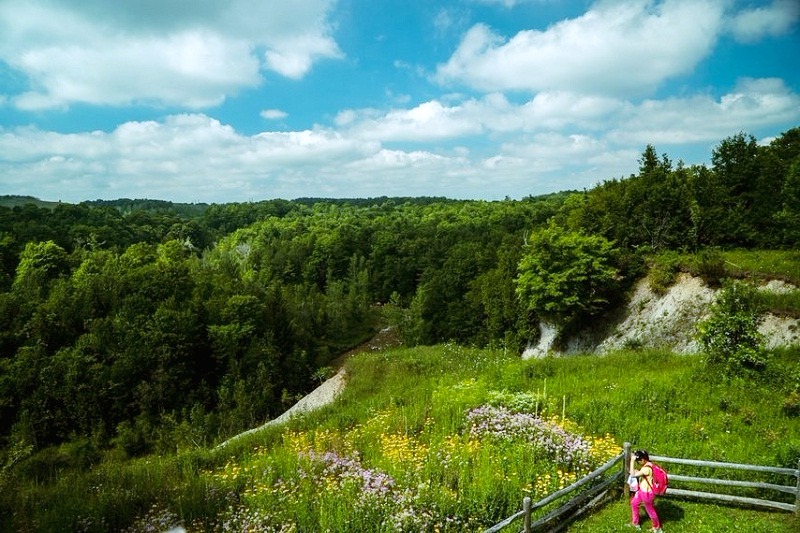Don’t worry, we aren’t talking about a river parts amock here.
The word ‘Rouge’ means ‘red’; the Rouge River gets its name from the reddish surrounding rocks. The presence of iron oxides makes these rocks look red. The river’s sandbanks have a reddish tint.The Rouge River is a tributary of the Ottawa River and a part of the Carolinian life zone.
From an altitude of 550 meters, it flows down 161 kilometers through the Laurentian Mountains to the Ottawa River. It is the main water body in a hilly region characterized by waterfalls and valleys. And if you are living in and around it, you are sure to get some of the freshest water around!
Interestingly, the Rouge River Valley is a very fragile natural phenomenon, even though it extends over eleven thousand acres. Incredibly, all of this exists within the city limits of Toronto.
Watershed
A watershed is that area which holds rainwater, or snow, that drains into a marsh, river or groundwater.
The Rouge River watershed has been used by humans for 10,000 years, from the aboriginals to the final settlers. The watershed of the Rouge River is spread over an area of 336 square kilometers. Of this, 1% consists of water bodies, while around 24% is the forest.
Apart from that, 35% is urban area while the remaining 40% is agricultural land. You would find the watershed starting in around Oak Ridges Moraine and then flowing in as far south as the Lake Ontario. Rouge River falls into Lake Ontario at Rouge Beach.

Apart from the above facts, did you know that a little bit of the watershed also lies right in the Rouge National Urban Park, the largest urban park in North America? The watershed covers some really wide regions, which include everything from York and Durham, Toronto, to even Whitchurch-Stouffville.
Major points
Human interference and arrogance, have started to harm and degrade this natural treasure. The carrying capacities of the natural systems in this watershed have been exceeded far beyond their replenishment rates. Detrimental changes like increased surface runoff water, water pollution, increased erosion, and consequently, sedimentation, and loss of biofdiversity are well on their way to becoming permanent features.
Further, the Rouge Park has no legislated protection. Likewise the Rouge River. Unlike the Humber River, which has been designated as a ‘heritage river’ and has in-built monitoring controls, the Rouge River has no safeguard or statutory watchdog.
The primary owner of the Rouge Park Lands is the Toronto and Region Conservation Authority (TRCA). But its track record of protecting watersheds or parklands is not very reassuring.
Approval for the development in the floodplains, altering the course of the Rouge River and narrowing of the Oak Ridges Moraine corridor are a few of the worrying developments.
To make matters worse, the TRCA cannot be held accountable under the Environmental Bill of Rights.
On a final note
While human beings depend on nature for survival, our ever-growing refusal to acknowledge this fact is slowly, but surely, pushing us towards our own eventual ruin. And at the moment, North America is in real danger of losing one of its natural endowments.